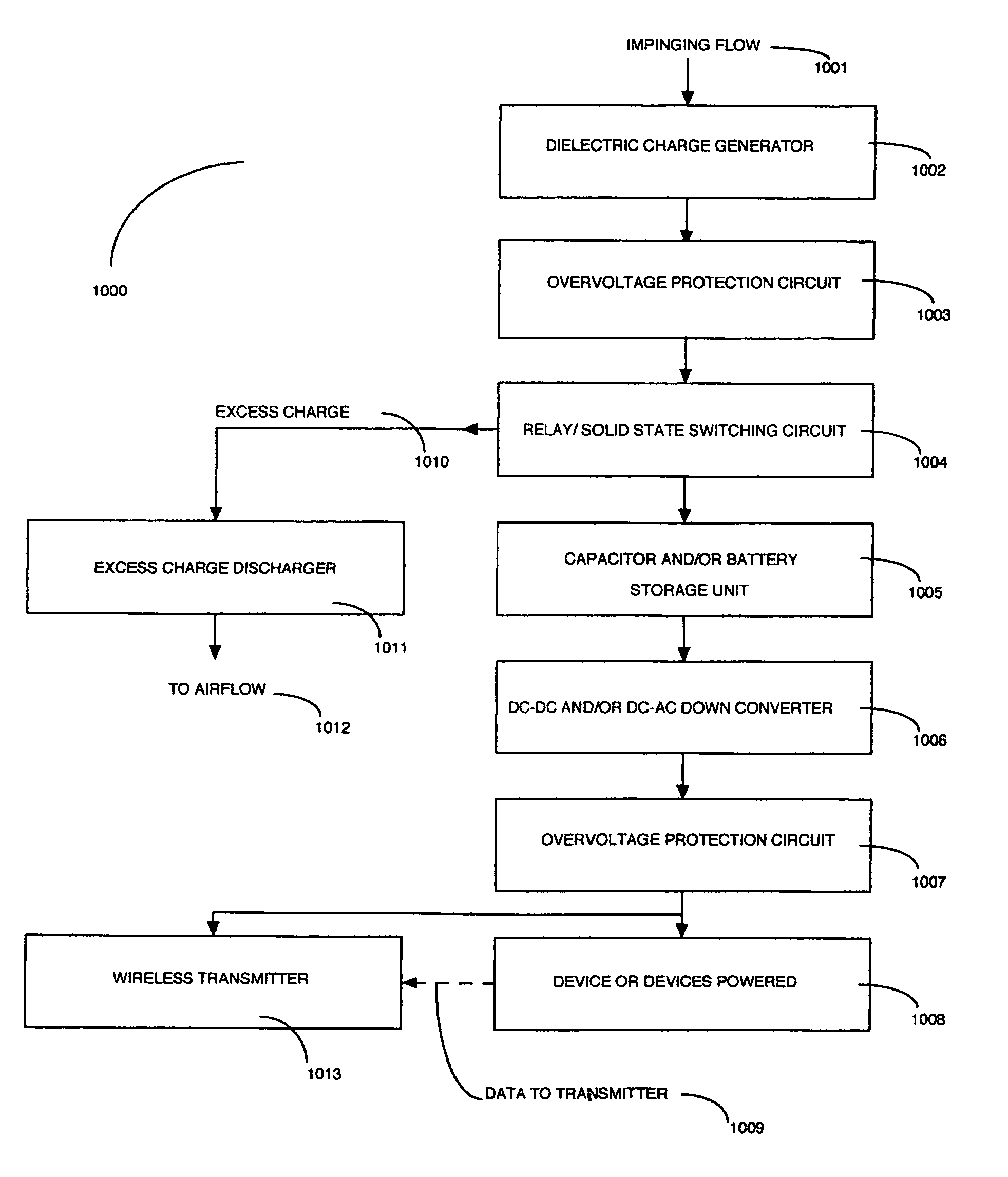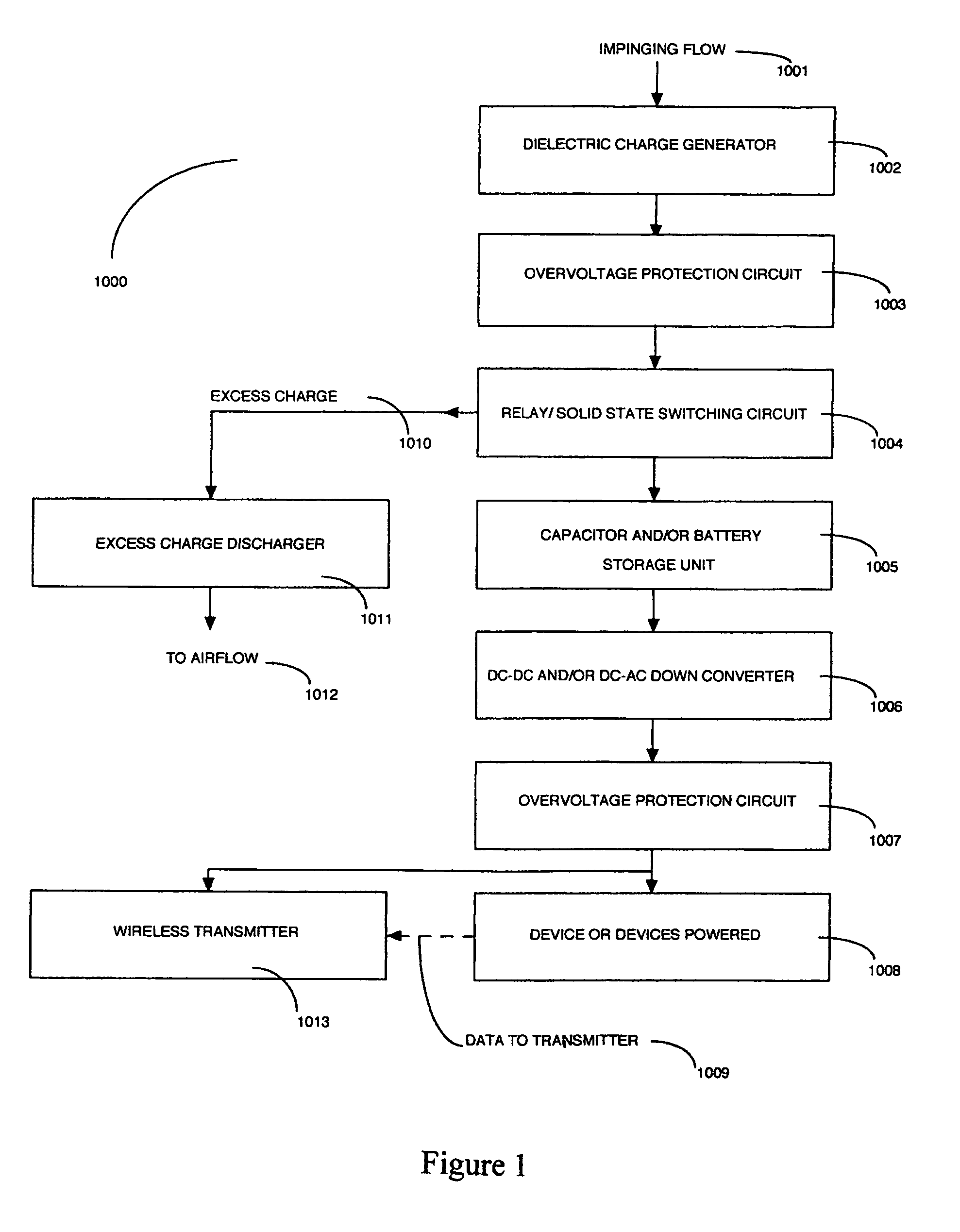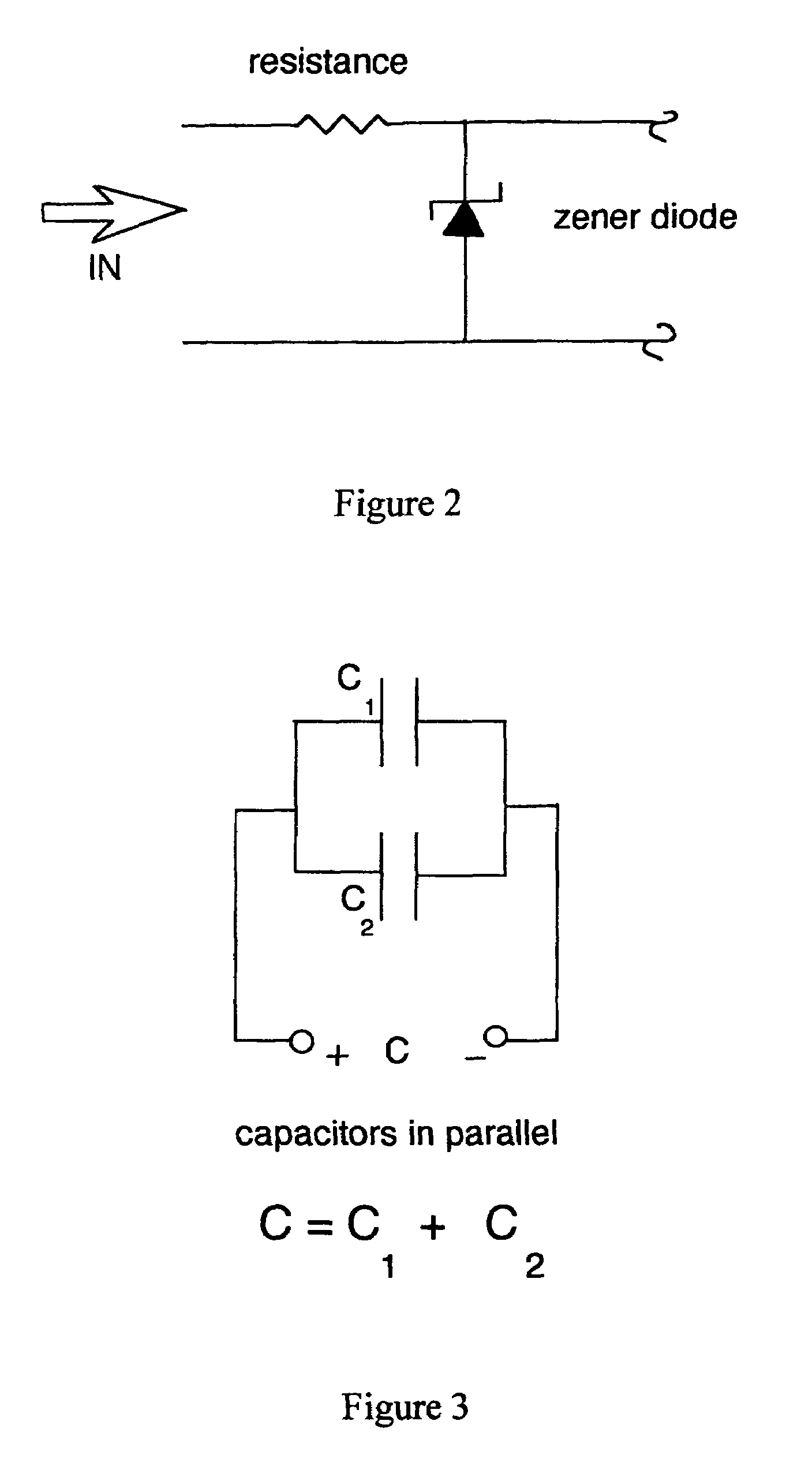P-static energy source for an aircraft
a technology of p-static energy source and aircraft, which is applied in the direction of generator/motor, machine/engine, emergency protective arrangement for limiting excess voltage/current, etc., and can solve the problem of not making measurements presently
- Summary
- Abstract
- Description
- Claims
- Application Information
AI Technical Summary
Benefits of technology
Problems solved by technology
Method used
Image
Examples
Embodiment Construction
[0045]Referring now to the drawings and in particular to FIG. 1, the present invention discloses the block diagram 1000 which includes impinging flow with charging ingredients 1001, a dielectric charge generator 1002, an upstream overvoltage protection circuit 1003, a relay / solid state switching circuit 1004, a rechargeable capacitor (or rechargeable battery) energy storage unit 1005, a DC-to-DC and / or DC-to-AC step down converter 1006, a downstream overvoltage protection circuit 1007, a device or devices to be powered 1008, information and data to wireless transmitter 1009, excess charge 1010, an excess charge discharger 1011, airflow 1012, a wireless transmitter 1013 and an adjacent lightning protection unit (not shown). The upstream overvoltage protection circuit 1003 consists of a zener diode and resistance (or equivalent circuit) placed in the main circuit as shown in FIG. 2. The downstream overvoltage protection circuit 1007 also consists of a zener diode and resistance (or eq...
PUM
 Login to View More
Login to View More Abstract
Description
Claims
Application Information
 Login to View More
Login to View More - R&D
- Intellectual Property
- Life Sciences
- Materials
- Tech Scout
- Unparalleled Data Quality
- Higher Quality Content
- 60% Fewer Hallucinations
Browse by: Latest US Patents, China's latest patents, Technical Efficacy Thesaurus, Application Domain, Technology Topic, Popular Technical Reports.
© 2025 PatSnap. All rights reserved.Legal|Privacy policy|Modern Slavery Act Transparency Statement|Sitemap|About US| Contact US: help@patsnap.com



